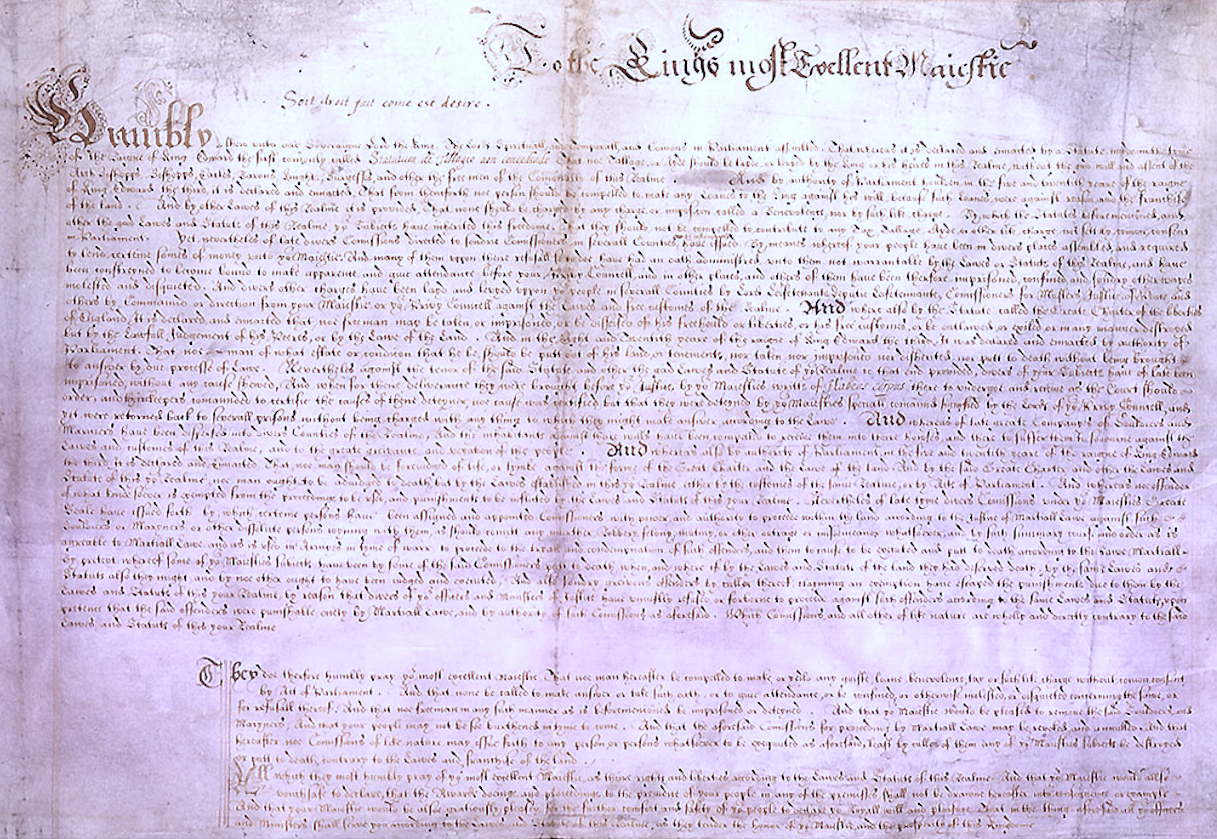While the right to petition the Crown and Parliament dates back to Edward I, it was not until the last year of Richard II that Petitions were addressed to the House of Commons itself. The inherent right to petition the Parliament was confirmed by resolution of the House of Commons in 1669. This same right for example has been adopted by the Western Australian Parliament as all Australian Parliaments as part of the Westminster system of Parliament.
Petitions allow citizens to request the Parliament to redress any personal, local or state-wide grievance they may have. Petitioners might ask for changes to a law or to have an administrative decision reconsidered. Petitions can also request the redress of a personal grievance, for example, the correction of an administrative error. They cannot, however, request the grant of public money direct to the petitioner or another individual.
Petitioners cannot personally present a petition to the House. They must request a Member to present it to the House on their behalf; they may ask either their local Member of Parliament or another Member. Standing Orders require that a Member of Parliament will, prior to presenting a petition to the House, forward the petition to the Clerks-at-the-Table who, if the petition is in order, will certify that the petition conforms with the Standing Orders.
When presenting the petition, the Member rises to address the Speaker, announces the number of signatures, the subject of the petition and reads the requested action or remedy. The petition is then received by the Assembly. A summary of the text of the petition will then be recorded in the Assembly's Votes and Proceedings, and appears in full in Hansard.
Legislative Assembly Standing Orders set out some commonsense and simple rules governing the format and presentation of petitions. It is important that those preparing a petition keep these in mind before collecting signatures. This will avoid the possibility of the petition not being accepted.
The simple rules to follow are as below -
Contents of petitions:
64. A petition will -
- Be legible.
- Be addressed to the Speaker and the Assembly.
- State the action or remedy sought from the Assembly.
- Be in English or be accompanied by a translation certified to be correct by the lodging member.
- Contain at least one signature.
- Contain the action or remedy sought on the top of every sheet.
- Contain the names and addresses of the petitioners and their own signatures or marks, except in case of incapacity or sickness where someone else may sign on their behalf.
- Not contain signatures pasted or otherwise transferred to the petition.
- Be respectful and temperate in its language.
- If from a corporation, be made under its common seal.
Petitions will not contain:
65. A petition will not -
- Have letters, affidavits, or other documents attached to it.
- Be lodged by a member who has signed the petition as a petitioner.
- Make an application for direct grant of public money to be paid to an individual.
Procedure for lodgement and presentation
66. The procedure for the lodging and presentation of a petition will be -
- The member must write the number of signatures contained in the petition on the front sheet and sign the front sheet.
- The Clerk will certify on the petition that it is in conformity with the Standing Orders.
- The member presenting the petition will read the prayer, announce the subject matter of the petition and the number of signatures attached to it unless the Speaker determines otherwise.
- The petition will be received unless the Assembly or the Speaker determine otherwise.
- No discussion of the subject matter is allowed.
